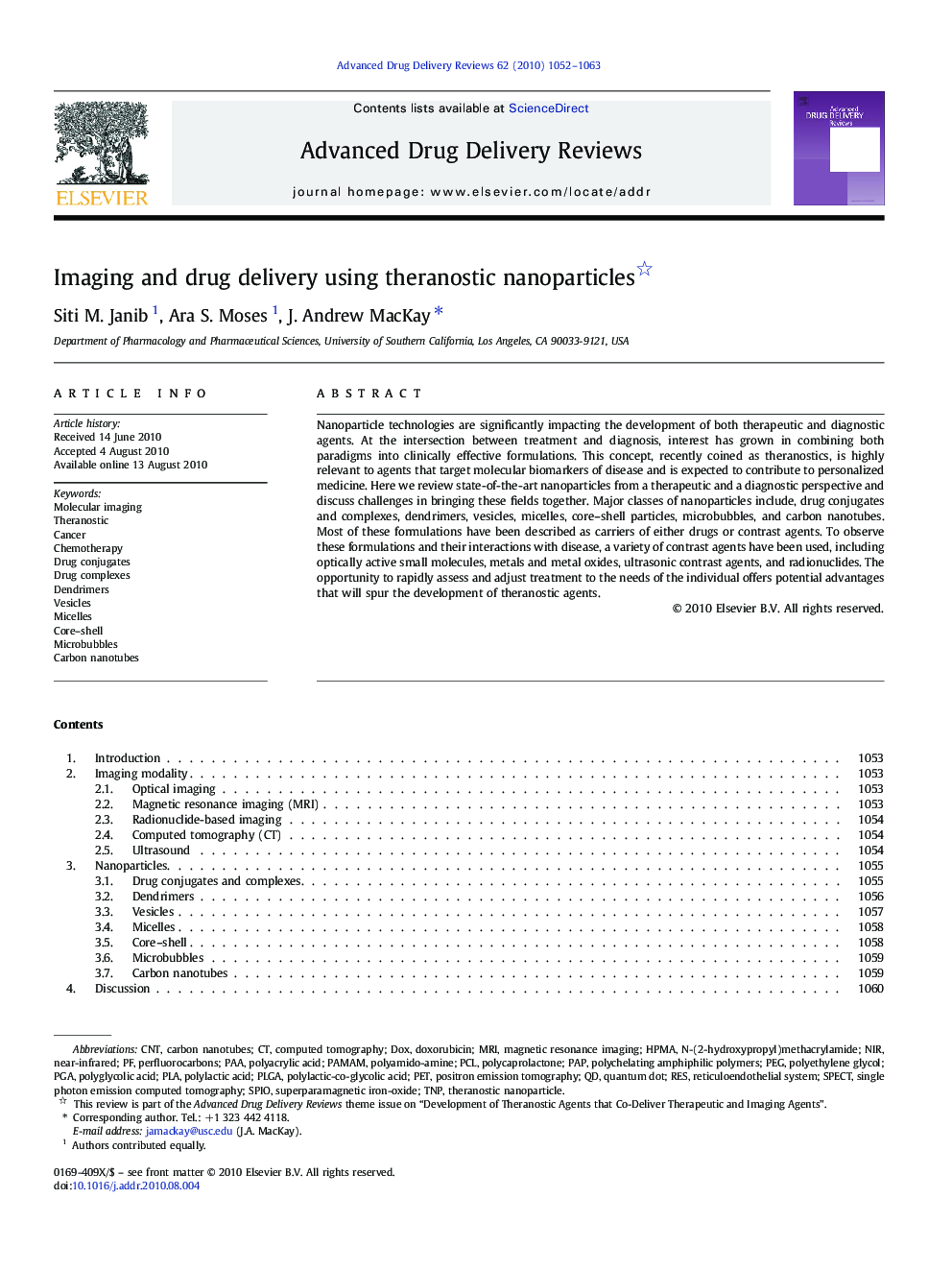| Article ID | Journal | Published Year | Pages | File Type |
|---|---|---|---|---|
| 2071426 | Advanced Drug Delivery Reviews | 2010 | 12 Pages |
Nanoparticle technologies are significantly impacting the development of both therapeutic and diagnostic agents. At the intersection between treatment and diagnosis, interest has grown in combining both paradigms into clinically effective formulations. This concept, recently coined as theranostics, is highly relevant to agents that target molecular biomarkers of disease and is expected to contribute to personalized medicine. Here we review state-of-the-art nanoparticles from a therapeutic and a diagnostic perspective and discuss challenges in bringing these fields together. Major classes of nanoparticles include, drug conjugates and complexes, dendrimers, vesicles, micelles, core–shell particles, microbubbles, and carbon nanotubes. Most of these formulations have been described as carriers of either drugs or contrast agents. To observe these formulations and their interactions with disease, a variety of contrast agents have been used, including optically active small molecules, metals and metal oxides, ultrasonic contrast agents, and radionuclides. The opportunity to rapidly assess and adjust treatment to the needs of the individual offers potential advantages that will spur the development of theranostic agents.
Graphical AbstractFigure optionsDownload full-size imageDownload high-quality image (65 K)Download as PowerPoint slide
